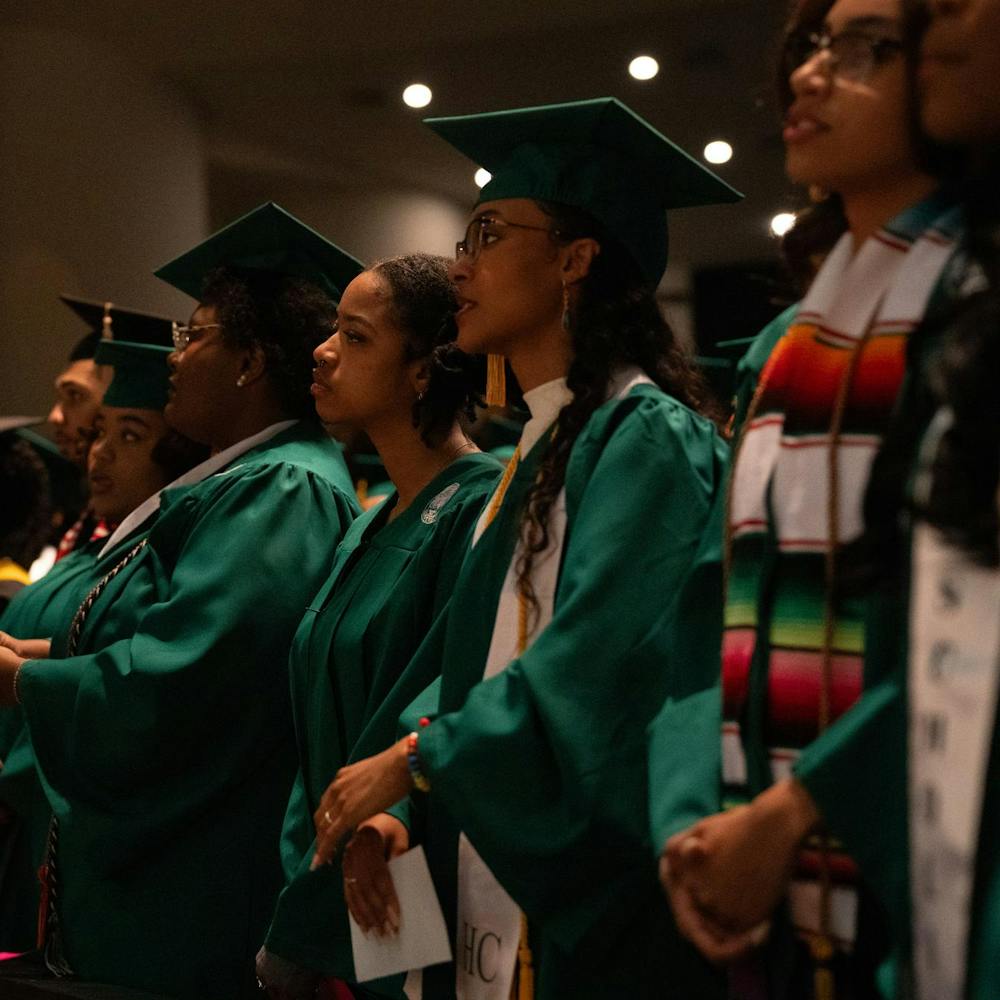Sidney Finkel knew he arrived at 13 years old at Buchenwald, one of the largest concentration camps in Nazi Germany. He knew he had survived the Holocaust as a Polish Jew. But until Finkel obtained his prisoner record from Kenneth Waltzer, an MSU professor of Jewish studies, he didn’t know he had entered the camp in December 1944 or that he had arrived with his brother and father.
“(After a while) your memory plays funny tricks on you,” he said. “You kind of think that maybe it didn’t happen that way … Now, I actually have documentation that Ken Waltzer handed me that I arrived in Buchenwald,” Finkel said.
In 1945 the allies were cutting through Nazi Germany, liberating thousands imprisoned in Nazi concentration camps. But in Buchenwald, where more than 56,000 prisoners died during the camp’s operation, they found something unique – 904 young boys.
As the largest group of children liberated at a concentration camp during World War II, the boys’ survival puzzled Waltzer, who has studied the topic for the past three years.
In March, Waltzer was selected by the U.S. Holocaust Memorial Museum for his work on the Holocaust as one of the first 15 researchers to assess the research value of the Buchenwald records in Bad Arolsen, Germany. This summer, Waltzer is researching the reason for the boys’ survival more completely because of newly-granted access to the meticulously-kept Bad Arolsen files on camp prisoners.
Waltzer, himself of Jewish descent, theorized from the prisoners’ testimonies that, as children, they were protected by an internal network of older prisoners. But he lacked the documentary evidence to confirm it.
“How were (the children) still alive to be liberated when the Nazis treated them as useless eaters?” Waltzer said. “The big conclusion was that there was a group in the camp, connected with the underground, who clustered the children in specific barracks … and protected them as well as they could.”
Normally the children, unable to work, would have been targeted for killing by the Nazis, he said.
While in Germany from June 16-26, Waltzer worked hectically copying files on about 200 prisoners, he said.
This summer he is using individual testimonies and the collected documents to explore how the children were protected by other prisoners, he said.
“Not everybody lived,” he said. “But a significant number of children were given refuge or haven, disciplined, kept safe, even had classes in a rudimentary sort of way to lift their spirits, to make them believe there was another world.”
Waltzer has collected the testimonies of about 150 of the surviving boys, now in their 70s, including Elie Wiesel, author and 1986 Nobel Peace Prize winner.
“When you put lots of individual stories together, you have a group history,” Waltzer said.
A book of his conclusions, “The Rescue of Children and Youth at Buchenwald,” will be released in 2009, he said. The book will combine the prisoners’ individual stories into a collective narrative, he said.
“Nobody’s done a book on rescue inside a concentration camp, as opposed to outside,” Waltzer said. “(It’s) rescue not by bystanders but by fellow prisoners.”
Before this spring, the Bad Arolsen archives had been open as part of the American Red Cross International Family Tracing Service, which was open only for Holocaust survivors and their families, he said.
Josh Kaplan, a 2008 MSU graduate, said that this type of Holocaust research is needed to study the concentration camp children’s experiences, a usually overlooked issue. As a Jewish student of Waltzer’s, he added that he will read the book.
“I think it’s important whether you’re Jewish or not,” Kaplan said. “Bringing to light the atrocities of the Holocaust are something that we need to continue … and to remind people that it can happen and we must step up and stop it.”
The former chief rabbi of Israel, Israel Meir Lau, also one of the Buchenwald boys, has taken note of Waltzer’s work. The professor found the name of an older male prisoner who protected Lau in the camp as a child, said Michael Serling, chair of the MSU Jewish Studies Advisory Board. The discovery gained widespread news coverage in Israel, he added.
“That just shows you the significance of the kind of work that Ken is involved in,” he said. “It’s pace-setting. It’s out front in Jewish Holocaust research.”
Support student media!
Please consider donating to The State News and help fund the future of journalism.
Discussion
Share and discuss “Untold Holocaust stories revealed” on social media.






